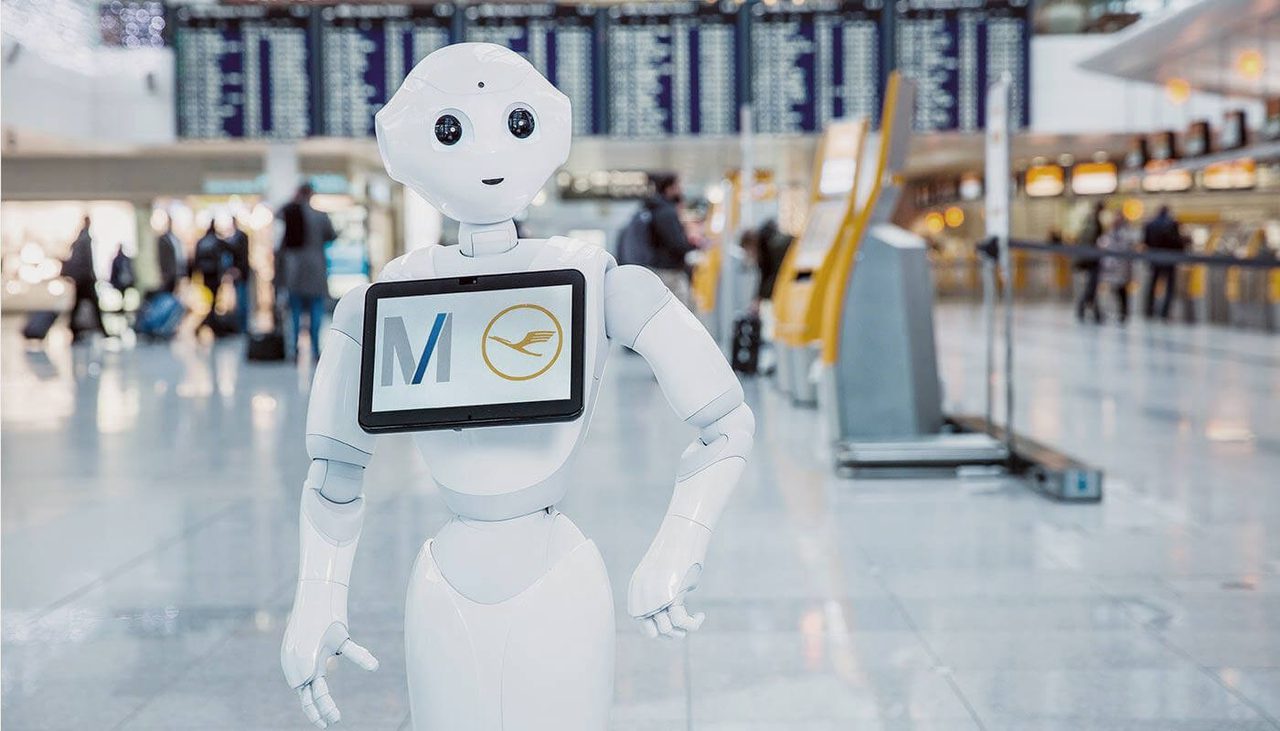
Technology
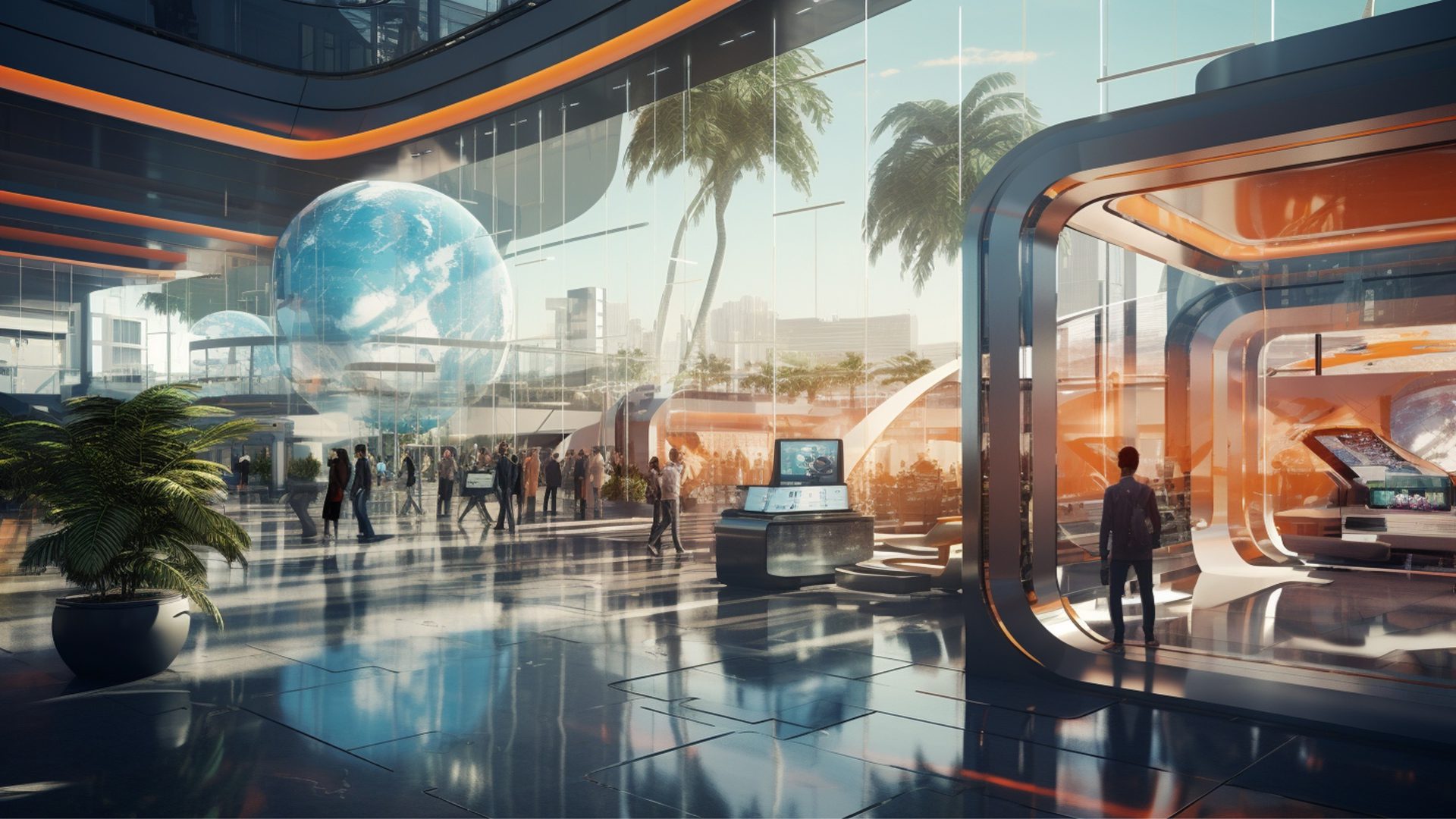
Devin Liddell | Principal Futurist

Devin Liddell
Devin designs preferred futures in aviation, automotive, smart cities, personal mobility, space travel, and more.
Connect with Devin on LinkedIn
Airports today are shaped like dumbbells. One end of the dumbbell is for ticketing and checked bags. The opposite end is where the gates are located along with restaurants and shops. The thin middle between the two ends is for security screening, which separates the “landside” of the airport from its “airside.”
This airport shape has become more pronounced in the past two decades, mainly because of security screening apparatuses. But artificial intelligence is poised to subvert that shape, first by creating new ways for people to interact with existing airport infrastructure, then by challenging the traditional landside-airside barrier, and, finally, enabling all-new design approaches to the physical and digital footprints of airports. Here’s how those changes will unfold in the next five, 10, and 20 years.
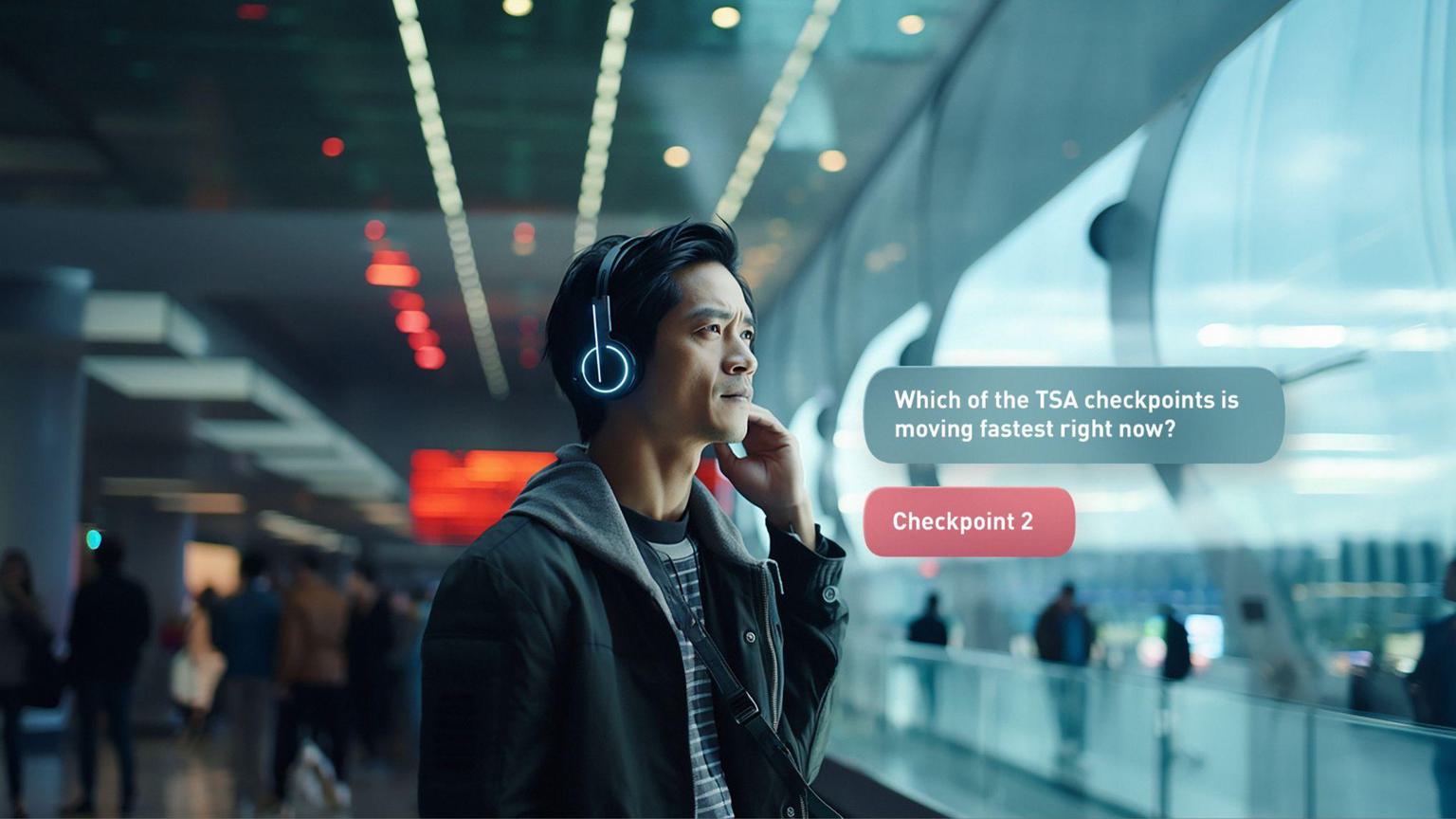
FIVE YEARS FROM NOW
Airports have historically told you what they are doing: a giant flight information display system or series of gate announcements is the airport broadcasting its operations. What you are doing as a passenger is extracting relevant information and maneuvering those operations. This power dynamic between what an airport is doing and what a passenger is doing is changing, though, and becoming far more collaborative. At Seattle-Tacoma International Airport (SEA), passengers can make “spot saver” appointments for security screenings, skipping the lines and avoiding any anxiety about getting through checkpoints ahead of flight times. Also at SEA, passengers parking their vehicles can use an automated parking guidance system to find open spots faster. In each instance, the airport is improving its efficiency by allowing passengers to interact with infrastructure more directly.

Add five years to these types of innovations, and it’s easy to imagine even more personalized interactions with existing airport infrastructure. SEA’s sensor- and beacon-powered automated parking guidance system will integrate with passengers’ AI-powered hearables and wearables through highly personalized voice-based interactions like “What parking garage floor and aisle has the most open spots nearest to an elevator?” Extending that level of integration to airport partners, such as restaurateurs and ground transportation providers, will position the airport as a broker of services and enable passenger queries such as “What restaurants in concourse B have tables available right now?” and “What’s the least expensive ride that’ll be available when I exit the terminal?” Some of these integrations will create lead-generation revenue for the airport as well.
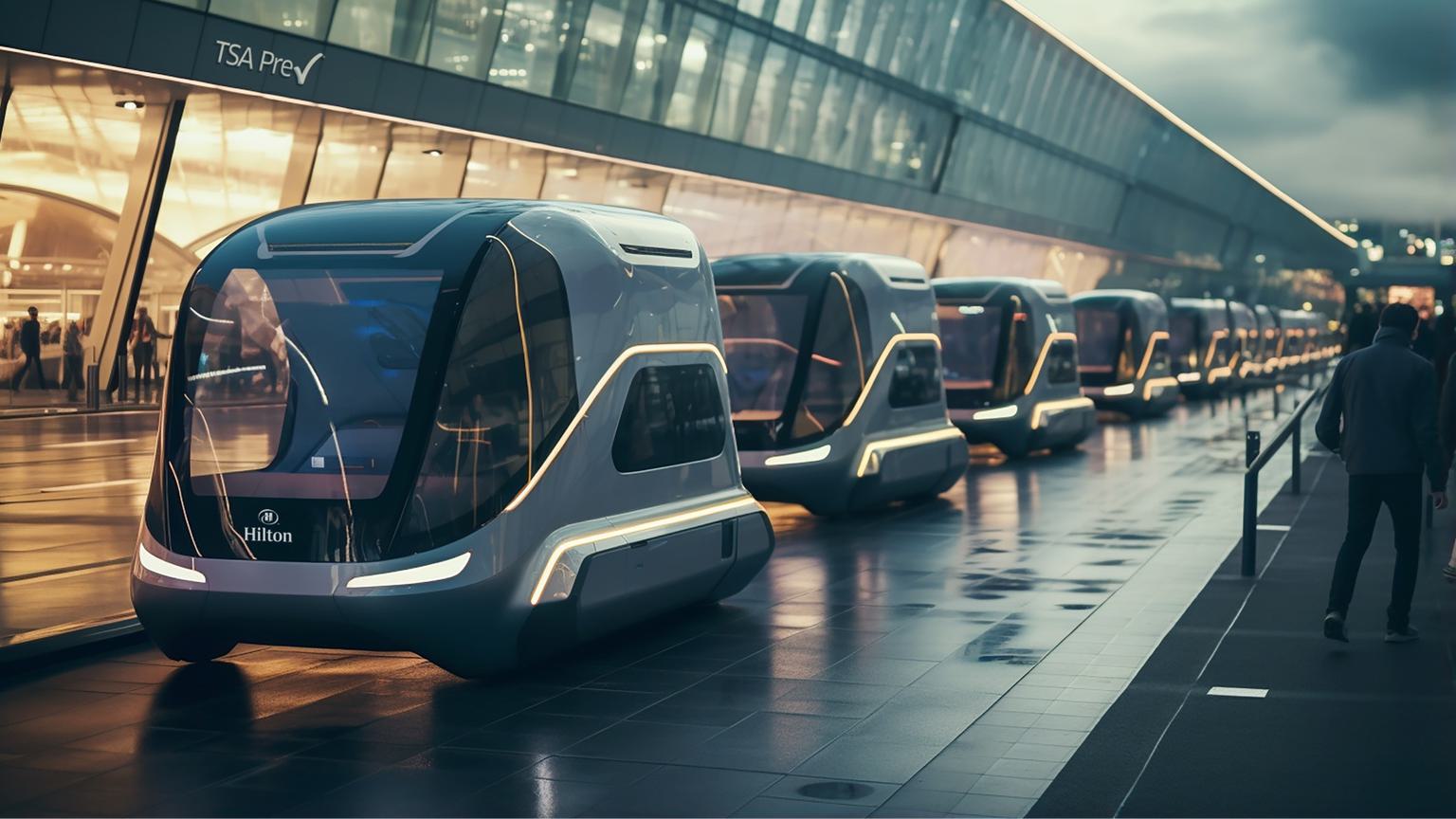
10 YEARS FROM NOW
Artificial intelligence is at the heart of autonomous vehicles, and while we still tend to think of self-driving cars as a far-horizon innovation, there are already operational fleets serving the public in San Francisco and Phoenix. Autonomous vehicles are also the single biggest future disruptor to contemporary airport operations, for two big reasons. First, they’ll erode parking-garage revenues as these fleets begin taking more and more passengers to the airport. Second, autonomous vehicles are secure and surveilled. For the purposes of fleet operations, this means riders are authenticated as they access the vehicle and the vehicle itself is outfitted with cameras and microphones for monitoring and communicating with riders as needed. Those built-in characteristics make autonomous vehicles a logical way for security screening to occur en route to the airport, either through TSA agents interacting with the passengers remotely or potentially even AI agents with a purely digital presence inside the vehicle. In other words, autonomous vehicles are next-generation, AI-powered TSA checkpoints.
The prospect of en route TSA screening onboard autonomous vehicles presents some interesting operational possibilities for airports and airlines. If passengers are screened while they’re headed to the airport, then they’ll need to arrive on the airside of an airport since that’s the post-screening “secure” side. There are two potential airside destinations, and both could be used simultaneously. One is inside at the concourses and gates, and the other is directly to the aircraft. Airport retailers and restaurateurs will be pleased by the former and distressed by the latter. With both, though, airports will have new opportunities to reallocate space for different functions within their physical footprints.
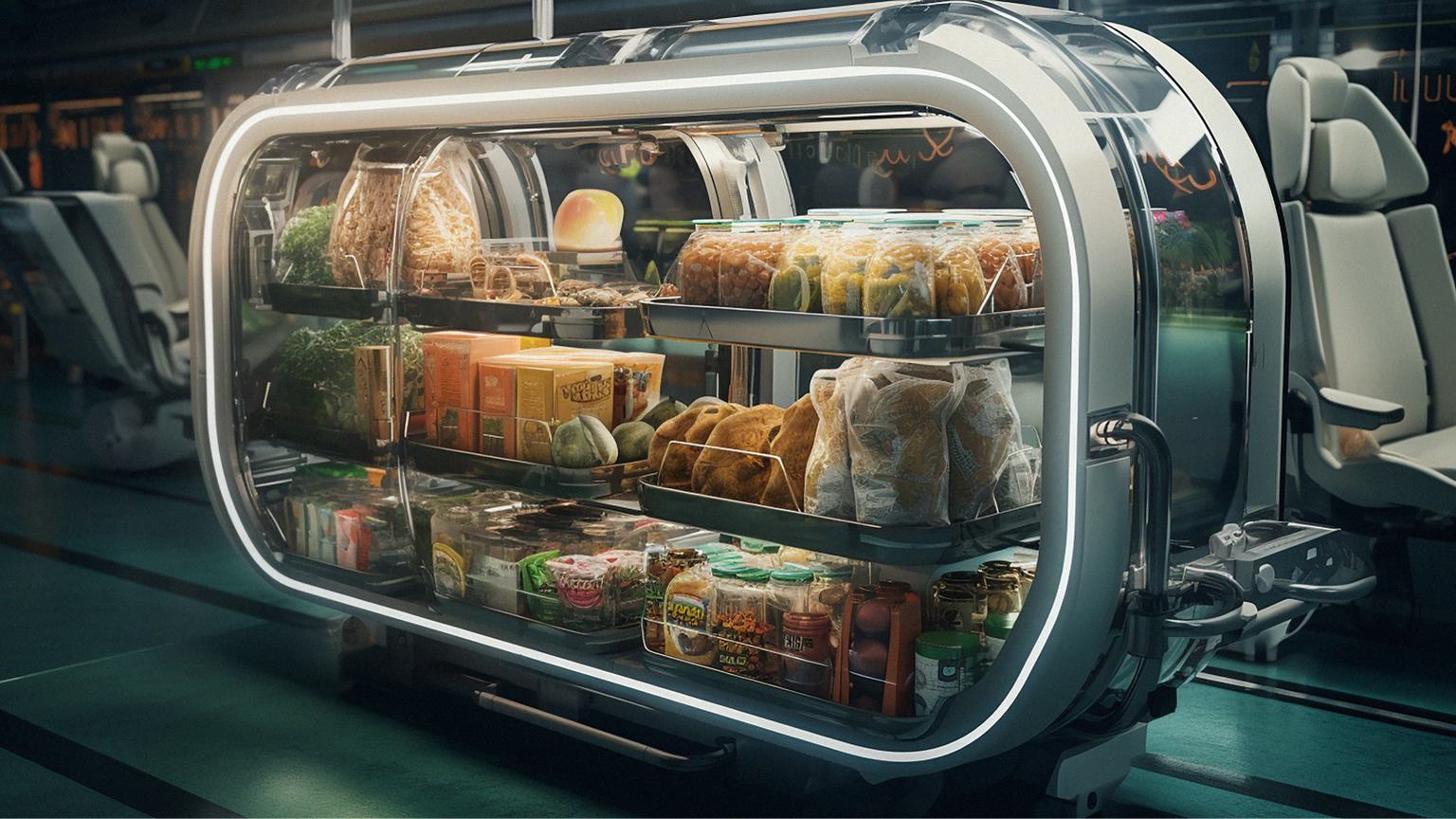
20 YEARS FROM NOW
What does it look like when a future airport uses AI to manage its security screening and baggage handling offsite and transports passengers directly to aircraft? Existing airports will fill spaces previously devoted to lining up and waiting with fun. That’s right, the permanent decline of business travel, the resilience of leisure travel, and retailers and restaurateurs having to compete with direct-to-aircraft transportation in the future will put an emphasis on entertainment experiences. These big spaces will be filled with big things, and there are already precedents for where this is headed. Singapore’s Jewel Changi Airport features the world’s largest indoor waterfall and 240,000 square feet of indoor gardens. Amsterdam Airport Schiphol offers free 24/7 access to Rijksmuseum Schiphol, a rotating exhibit from Holland’s most famous museum. Munich Airport has hosted indoor surfing events and high-ropes courses.
Brand-new airports will focus on designing within smaller physical footprints from the start. Combined with new forms of smaller and quieter aircraft, there will be opportunities to bring airports and urban cores closer together, which will better integrate commercial aviation with rail networks and city transit systems. Since AI will enable the remote operation of air traffic control systems, there will also be opportunities for “pop-up” airports that support population booms in places without traditional airports and flex to meet the ups and downs of seasonal demand or special events.
Though it isn’t obvious now and won’t be obvious in retrospect, the diverse shapes and digital footprints of these future airports twenty years from now will have shared origins in the expansion of artificial intelligence technologies today.
The article was originally published in Fast Company magazine.
Images generated by Teague using Midjourney.